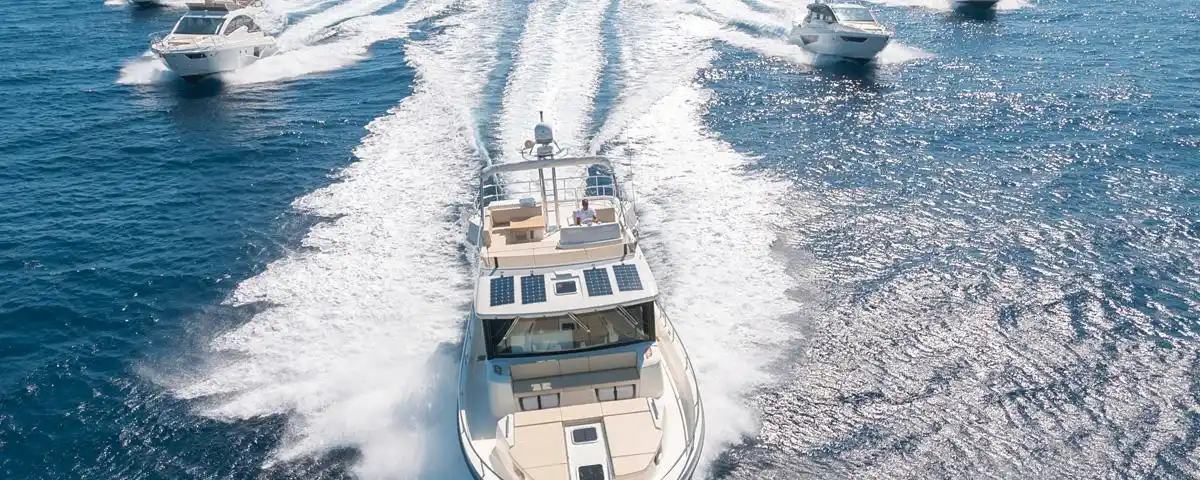 |
Welcome To Evlithium Best Store For Lithium Iron Phosphate (LiFePO4) Battery |
 |

Marine energy storage solutions can be categorized through two distinct analytical frameworks: electrochemical composition and functional application. This technical overview examines both classification methodologies while providing operational guidance for marine battery selection.
Starting Batteries (Cranking Batteries)
Engineered for high-current discharge applications, starting batteries deliver 400-800 cold cranking amps (CCA) to initiate internal combustion engines. Characterized by thin lead plates maximizing surface area, these units prioritize instantaneous power delivery over sustained energy output. Post-ignition systems transition to alternator-based power, rendering continuous battery discharge unnecessary.
Deep Cycle Marine Batteries
Featuring robust lead plates (2.5-3mm thickness) and advanced active material formulations, deep cycle variants support prolonged discharge cycles at 20-50% depth of discharge (DOD). Optimized for auxiliary systems including trolling motors (30-72V DC), navigation arrays, and onboard electronics, these batteries maintain stable voltage outputs through 200-1000+ complete charge cycles depending on electrochemical composition.
Dual-Purpose Hybrid Systems
Hybrid configurations attempt to balance cranking performance (≥350 CCA) with cyclic durability (≈150 cycles @ 50% DOD). Conventional lead-acid implementations demonstrate compromised performance in both domains, achieving 60-70% efficiency relative to dedicated units. Lithium iron phosphate (LiFePO4) chemistry substantially enhances hybrid capability, with modern units delivering both 1000+ CCA ratings and 3000+ cycle lifespans at 80% DOD.
Flooded Lead Acid (FLA)
Composition: Pb/Ca alloy grids with H2SO4 electrolyte (1.265 SG)
Maintenance: Requires monthly hydrometer checks and distilled water replenishment
Cycle Life: 200-300 cycles @ 50% DOD
Weight Profile: 16-30kg per 12V/100Ah unit
Absorbent Glass Mat (AGM)
Advancement: Fiberglass separator w/ 95-98% acid saturation
Vibration Resistance: 5x FLA baseline (SAE J537 compliant)
Charge Efficiency: 85-90% vs. 70-75% FLA
Gel Cell
Electrolyte: Thixotropic silica gel matrix
Thermal Tolerance: -40°C to 60°C operational range
Charge Restriction: Requires voltage-limited chargers (≤14.1V @ 25°C)
Energy Density: 120-140Wh/kg (3x lead-acid equivalent)
Charge Efficiency: 98% with 2C fast-charge capability
Cycle Performance: 3,000-5,000 cycles @ 80% DOD
BMS Integration: Multi-layer protection circuits with CAN bus/Bluetooth telemetry
Mass Optimization: 70% weight reduction vs. comparable lead-acid units
| Parameter | FLA | AGM | LiFePO4 |
|---|---|---|---|
| Specific Energy (Wh/kg) | 30-50 | 35-55 | 120-140 |
| Cycle Life (@50% DOD) | 200-300 | 300-400 | 3,000+ |
| Charge Time (0-100%) | 8-10h | 6-8h | 2-3h |
| Peukert Efficiency | 1.15-1.3 | 1.05-1.15 | 1.01-1.03 |
| Self-Discharge/Month | 3-5% | 1-3% | <1% |
While lead-acid systems present lower initial capital expenditure (150−300 per kWh), lithium solutions demonstrate superior total cost of ownership:
10-Year Cost Projection
LiFePO4: 1,200initial+0 maintenance = **1,200∗∗AGM:400 initial + 3 replacements + maintenance = $2,100+
Modern lithium marine batteries (e.g., 12V 100Ah LiFePO4) now integrate dual-purpose functionality with 1000A burst currents for engine starting and ultra-deep discharge tolerance for auxiliary loads. Advanced battery management systems (BMS) provide real-time monitoring via Bluetooth 5.0 with state-of-charge (SOC) accuracy within ±1%.
For vessels with continuous auxiliary loads >5A: Implement separate starting/deep cycle banks
In restricted spaces: LiFePO4 dual-purpose systems minimize footprint while meeting ISO 10133 standards
High-vibration environments: AGM or lithium solutions preferred due to solid-state construction
This technical analysis confirms lithium iron phosphate as the optimal electrochemical solution for modern marine applications, despite higher initial investment. The technology's charge efficiency, mass properties, and cycle durability align with evolving marine electrical demands and sustainability requirements.
Edit by paco